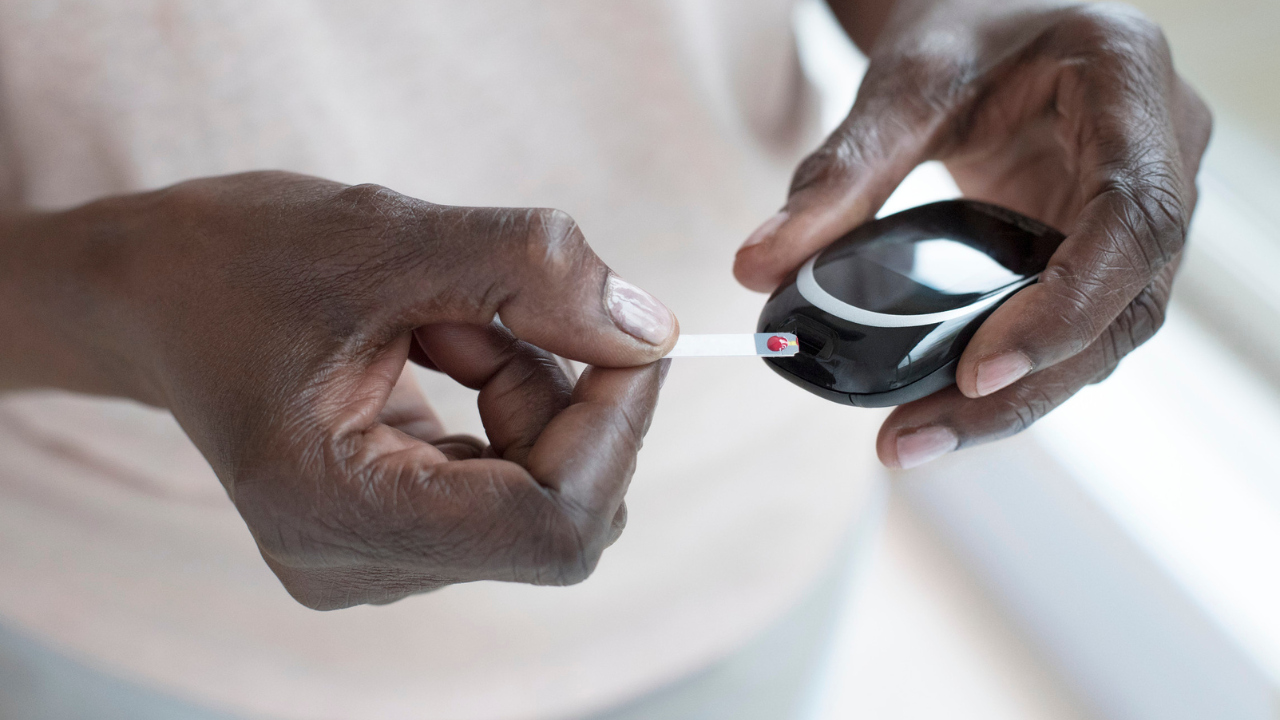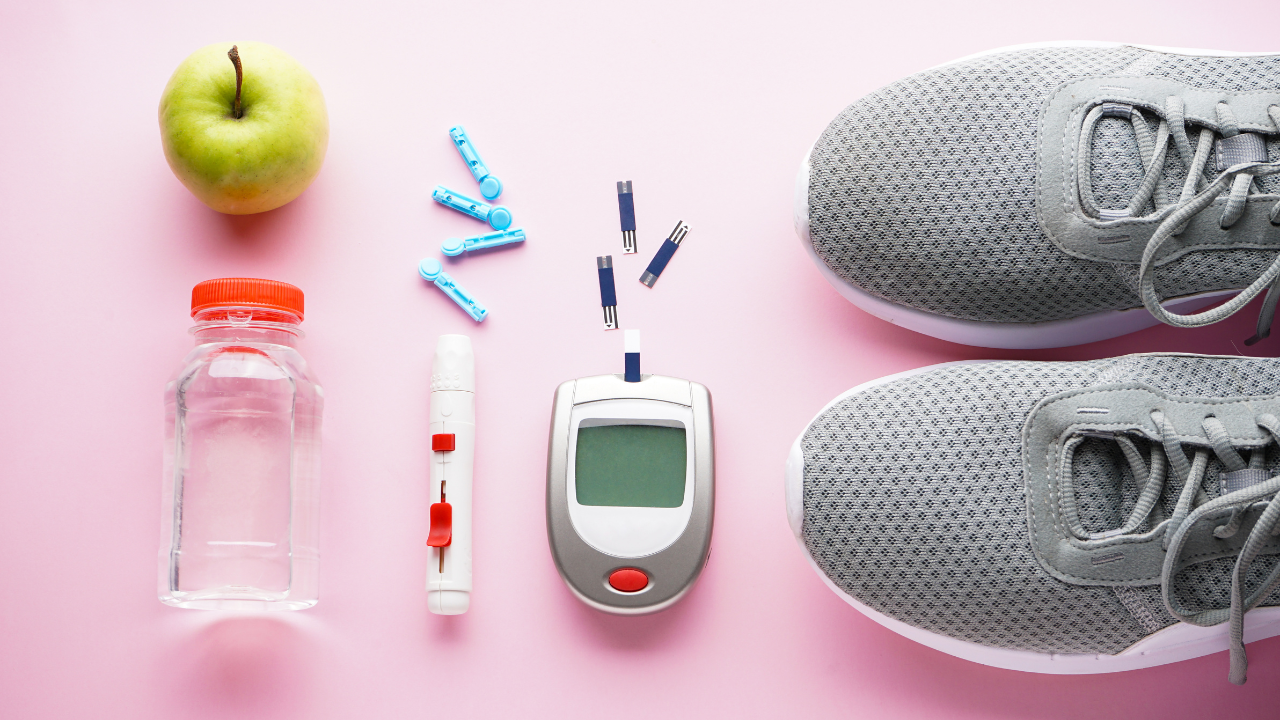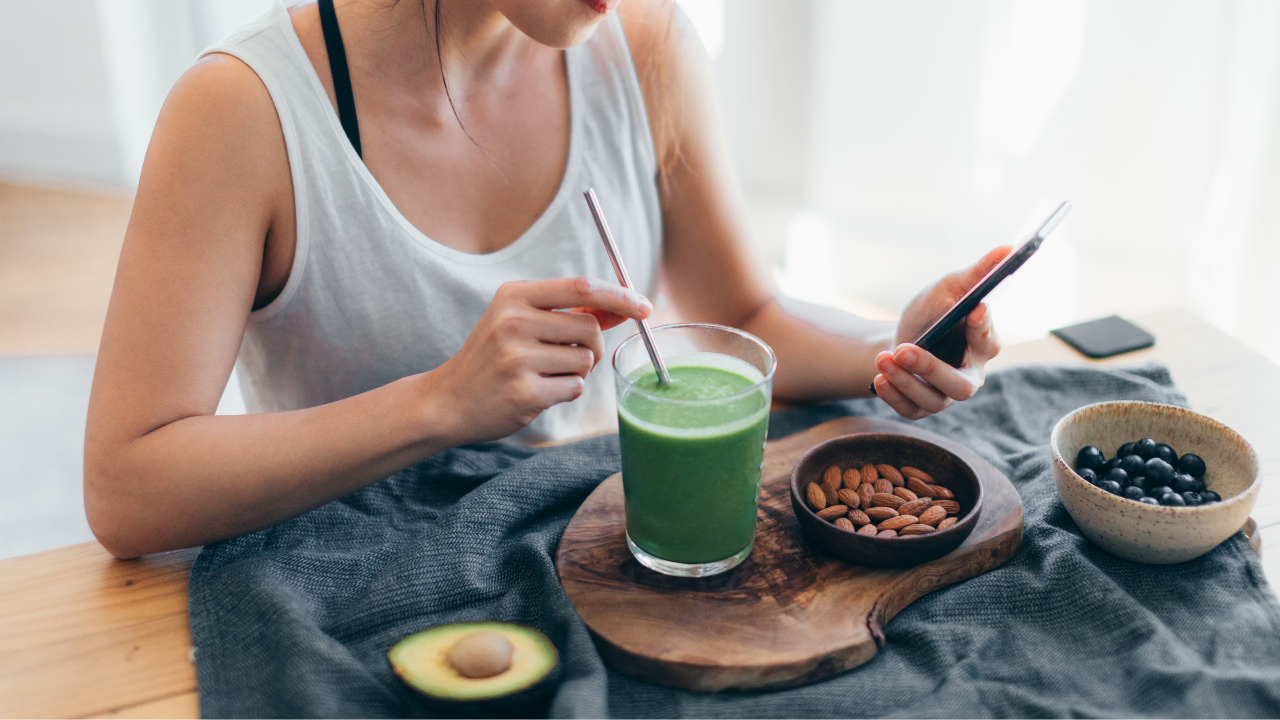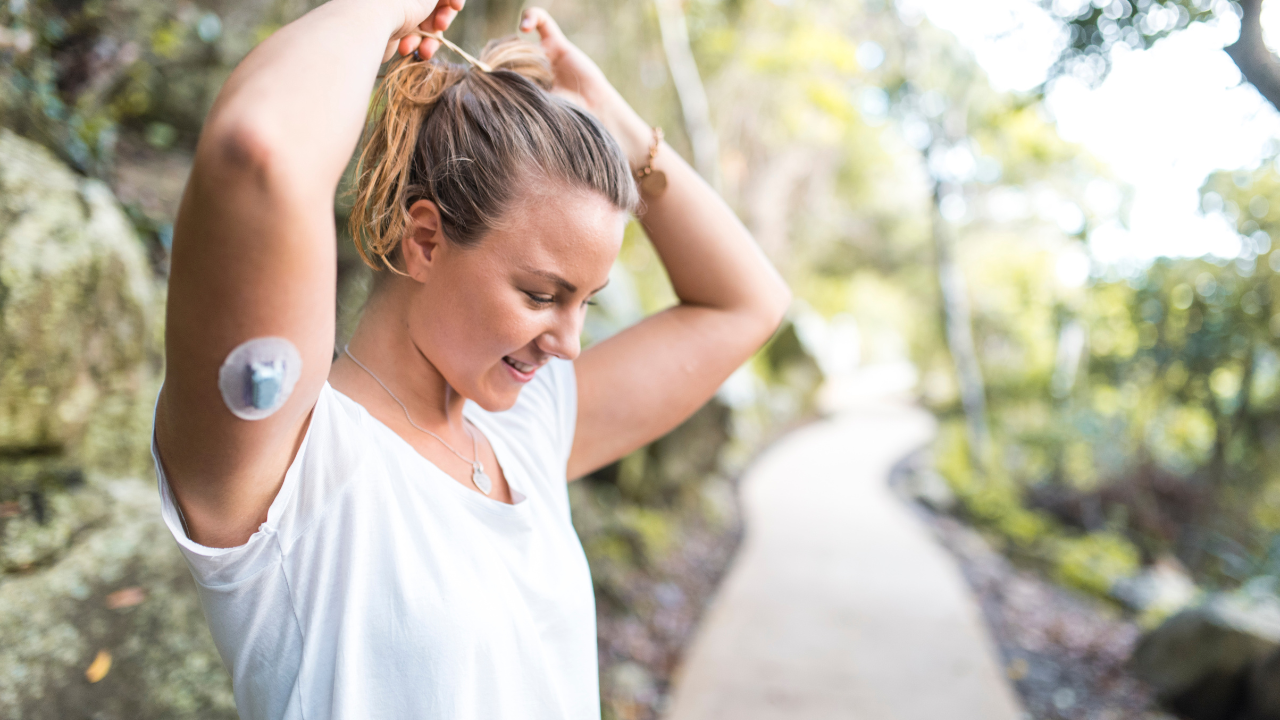Managing Your Diabetes with Intuitive Eating
If you have diabetes, you may have been told to follow a diet to treat this condition. Unfortunately, restrictive dieting is unsustainable and only tends to make diabetes (and other health conditions) worse. So if dieting isn’t the solution to managing your diabetes, what is?
If you’re new here, hello and welcome! My name is Hannah and I am a non-diet dietitian here to help you improve your relationship with your food and exercise and finally find food freedom.
Nutrition and exercise can play a key part in the prevention and treatment of chronic conditions such as diabetes. However, we want to avoid getting caught up in food restriction and strict rules.
In this blog, we will discuss how to apply the principles of intuitive eating for a non-diet approach to balancing blood sugars.
Table of contents:
What is diabetes?
Diabetes mellitus is a chronic condition that affects how the body turns food into energy. In a person without diabetes, the pancreas will release insulin to help shuttle the glucose from the foods that you eat to wherever the glucose is needed. Those with diabetes either do not produce insulin or their body cannot use it as well as it should.
The main types of diabetes are type 1, type 2, and gestational diabetes.
Type 1 diabetes
Type 1 diabetes occurs when the pancreas makes little to no insulin, which results in elevated blood glucose levels. According to the CDC, approximately 5-10% of people who have diabetes have type 1.
It is currently unknown what causes type 1 diabetes or how to prevent it. It is thought that this type of diabetes is an autoimmune reaction, where the body attacks healthy cells by mistake. Type 1 diabetes is sometimes referred to as juvenile diabetes, although people of any age can develop this type of diabetes.
Type 1 diabetes requires daily exogenous insulin to manage blood glucose levels because the pancreas cannot produce it on its own.
Type 2 diabetes
Type 2 diabetes occurs when the pancreas produces insulin but the body cannot use it as effectively. According to the CDC, about 90-95% of people with diabetes have type 2.
Risk factors of type 2 diabetes include age, family history, physical activity level, and certain conditions such as non-alcoholic fatty liver disease (NAFLD) and chronic kidney disease (CKD). It’s important to note that eating sugar and carbs is not a direct cause of type 2 diabetes. Type 2 diabetes also does not single out those in larger bodies - people of all shapes and sizes can develop type 2 diabetes.
Type 2 diabetes cannot be “cured”, but it is possible for some people to go into “remission” and lower their hemoglobin A1c into “normal” range with medication, lifestyle changes, or a combination of the two.
Gestational diabetes
Gestational diabetes develops in pregnant people who did not have diabetes prior to pregnancy. During pregnancy, the body goes through many hormonal changes that change the body’s ability to use insulin. In some cases, this can result in high blood sugars during gestation.
Gestational diabetes goes away after the baby is born, but it does increase the risk of type 2 diabetes later in life for both the birth parent and the child.
How is diabetes treated?
Diabetes treatment is individualized - each person’s treatment plan is different.
As mentioned above, those with type 1 diabetes require daily insulin use because the body cannot produce insulin on its own. Some people with type 2 diabetes may take insulin or other diabetes medications and some may treat their diabetes with lifestyle changes alone. In many cases, a combination of medication and lifestyle changes are pursued.
There is absolutely no shame in needing the support of diabetes medication. Some people can do everything “right” when it comes to diet and exercise and still require a medication to manage their blood glucose levels. There are so many factors that affect blood sugars beyond just food choices and physical activity(including stress and sleep). Our health is not totally in our control!
@dietitianhannah Replying to @pegbundy82 it’s pretty tough for people to eat “healthy” and “clean” when they don’t have access to food #socialdeterminantsofhealth #dietculture #wellnessculture #dietitian #dietitiansoftiktok #dietitianhannah ♬ original sound - Dietitian Hannah
Why diets don’t work for treating diabetes
A diabetes diagnosis often comes with a list of foods to avoid. While following a restrictive diet may lower blood sugars and hemoglobin A1c in the short term, such diets are often not sustainable. The body has many biological and psychological compensatory mechanisms in place to “fight” against restrictive diets.
You might assume that because restrictive diet advice is so frequently dished out that it would mean that dieting is an effective approach. Yet upwards of 97% of people who lose weight through dieting regain the weight they lost within two to five years. Not only that, but one- to two-thirds of people who diet regain more weight than they originally lost, ending up at a higher weight than where they started.
Simply put, diets don’t work, including for people diagnosed with diabetes. If you have tried treating your diabetes by going on a diet and it did not work for you, do not blame yourself. You are not the problem. Weight loss programs have an astronomically high failure rate, yet we continue to blame the struggle to “stick with it” on lack of motivation or willpower.
Do you need to cut out sugar to treat diabetes?
Sugar and carbohydrate intake are often to blame for type 2 diabetes. It is true that carbohydrates have the largest impact on our blood glucose levels. However, eating sugar does not cause diabetes and cutting sugar out of your diet will not necessarily lead to improved blood sugars or hemoglobin A1c.
Even if you have diabetes, your body still needs carbohydrates to support bodily functions, including for supplying energy to your cells, tissues, and organs. There is also a risk of hypoglycemia (low blood sugars) if inadequate carbs are consumed.
People with diabetes often benefit from having awareness of the total carbohydrates in their meals and snacks to make informed food choices that will support a steady blood glucose response. This is where the intuitive eating principle known as gentle nutrition comes in, as we will discuss later.
Will weight loss lower A1c?
Telling someone with type 2 diabetes to “just lose weight” is, frankly, terrible advice. Unfortunately, this is what many people with type 2 diabetes (especially those in larger bodies) are told to do when they are diagnosed. As previously mentioned, dieting attempts (weight loss attempts) fail up to 97% of the time, whether you have diabetes or not.
People in all sized bodies can develop diabetes. It is important that people with larger bodies receive the same care and treatment as those in smaller bodies. Because believe it or not, there are not any health conditions that only happen to those in larger bodies. I recommend reading this post to learn more about that.
Now, some individuals may lose weight when treating their diabetes and making nutrition and exercise changes. This does not automatically mean that weight loss is what improved their hemoglobinA1c - the behavior changes did!
This also does not mean that they did anything wrong by losing weight. They were likely just above their set point weight when they started making behavior changes. That said, weight loss as a sole treatment for type 2 diabetes is often ineffective and not every person with diabetes will lose weight as they manage their blood sugars.
What is intuitive eating?
Intuitive eating is a non-diet approach to eating that was developed by two registered dietitians, Evelyn Tribole and Elyse Resch. There are 10 principles of intuitive eating with a goal of helping you improve your relationship with food and your body.
Reject the diet mentality
Honor your hunger
Make peace with food
Challenge the food police
Discover the satisfaction factor
Feel your fullness
Cope with your emotions with kindness
Respect your body
Movement - feel the difference
Honor your health - gentle nutrition
If you are new to intuitive eating and looking to learn more, check out my ultimate beginner’s guide.
How to manage diabetes with intuitive eating
Intuitive eating is one way to manage your diabetes without dieting and cutting out your favorite foods. Intuitive eating involves learning to listen to your body rather than relying on food rules to dictate your food choice. There are ten total principles of intuitive eating and I recommend reading this post to learn more about how intuitive eating can be used to treat chronic conditions as a whole.
Many people with diabetes believe that intuitive eating will not “work” for them and that they need to follow a strict diet in order to manage their blood sugars. However, the contrary tend to be true. In fact, this study found that intuitive eating is associated with better blood sugar control in those with type 2 diabetes.
The principle I want to focus on for diabetes treatment is the principle of gentle nutrition. Gentle nutrition is essentially the intersection between fueling your body with the nutrients it needs while also eating foods that you want and enjoy.
Rather than cutting out sugar and carbs, practicing gentle nutrition often means considering what you can add to your plate. This will be a much more sustainable approach and trying to eat “perfectly” (which often translates to undereating).
Eat consistently
Steady blood sugars are the foundation of treating all types of diabetes. One of the best ways to support a positive blood glucose response is by eating regularly throughout the day. This looks different for every person and will even vary from day to day. In general, I typically recommend eating a meal or a snack every 3-4 hours or so to prevent your body from becoming depleted of the fuel that it needs.
Intermittent fasting is usually not recommended for those with diabetes. Fasting may lead to hypoglycemic episodes (low blood sugars), which can be dangerous.
Tune in to your appetite cues
Whether you have diabetes or not, you may have noticed certain symptoms when you are hungry and your blood sugar gets a bit too low. Dizziness, fatigue, brain fog, mood changes, and headaches are all signs that your body is in need of some glucose.
Your body has mechanisms in place to send your brain appetite cues when blood sugar starts to drop If you are someone who is usually aware of your hunger cues, you may be able to use them to guide your meal and snack timing.
All that said, there are many individuals who do not have trustworthy appetite cues. People who have dieted for a long time, for example, may have become very used to ignoring their hunger and their body may no longer send them cues. Neurodivergent people, including those with ADHD and autism, may also have difficulty knowing when their body needs fuel.
Individuals with diabetes may experience hyperphagia (increased hunger), especially prior to diagnosis and treatment. When a patient starts taking insulin or other diabetes medication, appetite may sometimes become suppressed. In these instances, relying on appetite cues may not be ideal or even a possibility.
If you feel like you cannot use your hunger and fullness cues to guide your eating, that’s okay. Hunger and fullness are only one part of intuitive eating.
Learn more about hunger cues:
Pair carbohydrates with protein and fats
As mentioned, carbohydrates have the largest impact on blood sugars. This does not mean that people with diabetes cannot eat carbohydrates. In fact, low carb and ketogenic diets tend to be unsustainable and also increase cravings. Sure, in a controlled setting, reducing intake of carbs may improve blood sugars in the short term. But we are humans, not robots in a lab. And we eat foods for more than jut fuel.
One of my favorite recommendations for folks with diabetes (or anyone looking to balance their blood sugars) is to add a source of protein and/or dietary fat to their carbs. In other words, try to prevent having “naked carbs” on your plate. This is a concept I call “The Blueprint for Balanced Meals” that I teach to members inside The Nutrition Reboot.
Both protein and fat can help to slow digestion and lead to a more steady supply of energy to the body. Pairing protein and fat with your carbs can help to prevent "rollercoaster" blood sugars and also keep you fuller and satisfied for longer between meals and snacks.
Prioritize high-fiber carbohydrates
Along with protein and fats, fiber also slows digestion and decreases the rate at which glucose enters the bloodstream. Choosing mainly complex (aka high-fiber) carbs can be a great way to balance your blood sugars.
If you guys have been following me for a while, you know that I love talking about fiber. You can listen to this podcast and read this blog to learn more about how to get fiber in your diet.
Now, just because fiber is nutritious and blood-sugar-friendly does not mean that you should avoid low-fiber carbohydrates (aka simple carbs). All foods fit. When having simple carbs such as sweets, try to incorporate protein and fats to help with blood sugar stability.
@dietitianhannah Replying to @ollyren good poops only in 2024 💩 #fiber #breakfast #chiajam #chiajamrecipe #highfiber #highfiberfoods #highfiberbreakfast #dietitian #dietitiantips #dietitianhannah #gentlenutrition #nutritiontips ♬ original sound - Dietitian Hannah
Incorporate joyful movement
It is no secret that exercise is recommended for those with diabetes (and pretty much everyone else too). However, more is not always better. Joyful movement is the key here. There is no place for using exercise as punishment or as a way to “make up” for what you ate the day before.
Exercise can improve insulin sensitivity, meaning that your body can use insulin more effectively. Both cardiovascular exercise and resistance training can be beneficial for folks with diabetes.
There are special considerations before starting an exercise routine. If you have diabetes, be sure to check with your health care provider to determine the best type and intensity of movement for you. You may need to adjust medications prior to or after exercise, especially if you take insulin. Be sure to also stay hydrated and monitor your blood sugar to avoid hypoglycemia (low blood sugars) or hyperglycemia (high blood sugars).
Monitor without judgement
Intuitive eating involves getting curious about how different foods affect you and make you feel. This will allow you to engage with food without judgement and fear and instead help you to build trust and respect for your body.
Be objective about how a food impacts your energy levels, satisfaction, and blood glucose levels (if you have diabetes and keep track of this). Remember that these are just data points. Your blood sugar readings just give you a glimpse of what is happening inside your body at that particular time. It is not a reflection of how "good" or "bad" you are as a person. You can then use this data to help you make future decisions.
How can a dietitian help with treating diabetes?
Registered dietitians can help you to manage your diabetes by providing guidance and support on managing the modifiable risk factors. You can work with me by joining my signature program to learn more able implementing gentle nutrition to improve your health without dieting.
Bottom line - does intuitive eating work for diabetes?
Yes, intuitive eating may be a beneficial approach for those with diabetes. Intuitive eating looks different for everyone and people with diabetes may “do” intuitive eating differently than those without, but this does not mean that a non-diet approach is not possible.
Disclaimer: this post is for informational and educational purposes only and is not a substitute for professional medical advice.
Follow along
Featured YouTube video
Want more help on your diet ditching journey?
Join my signature membership to become part of a community of ex-dieters working towards food freedom and making peace with food so they no longer need to cut out their favorite foods.




































